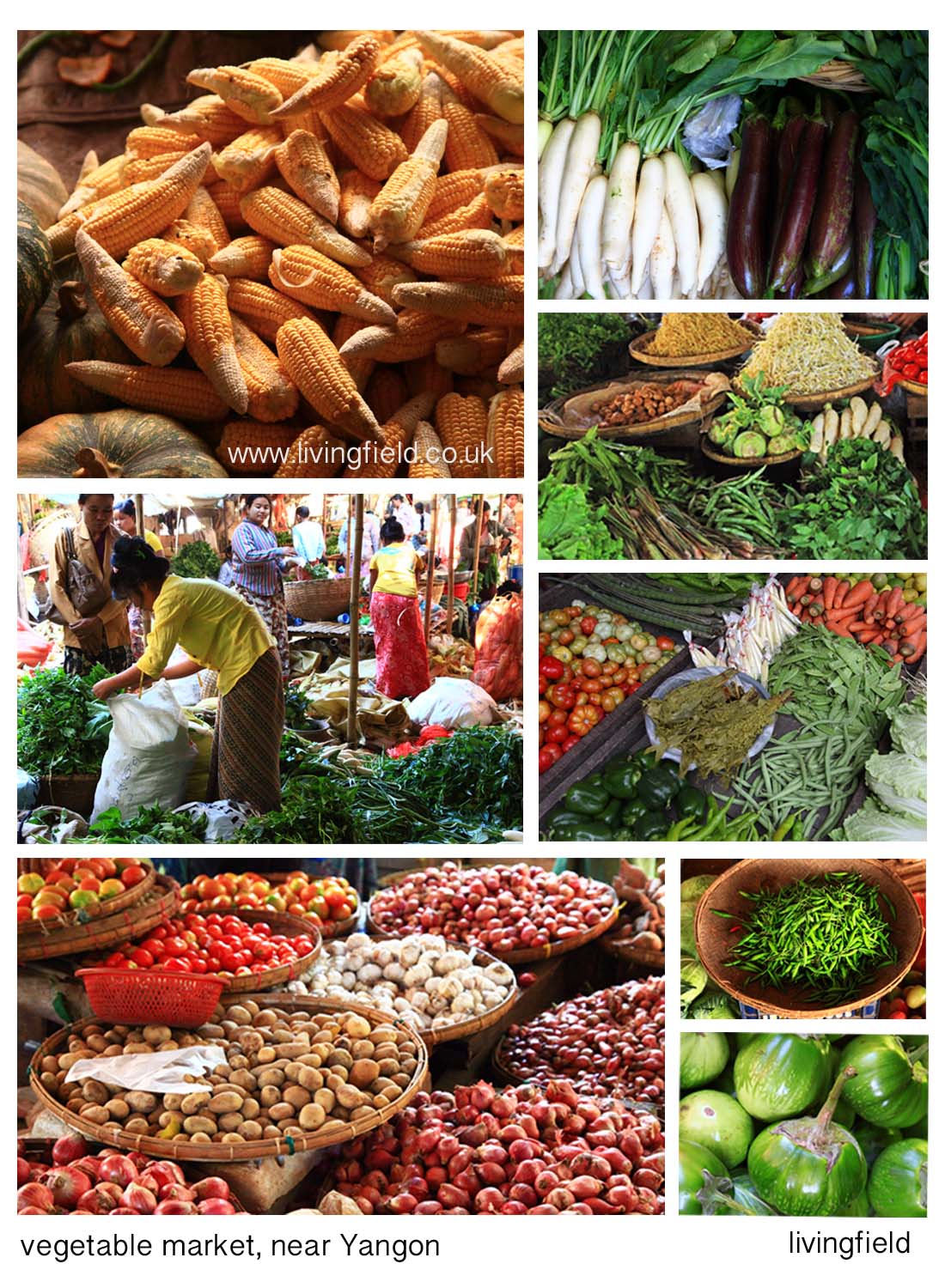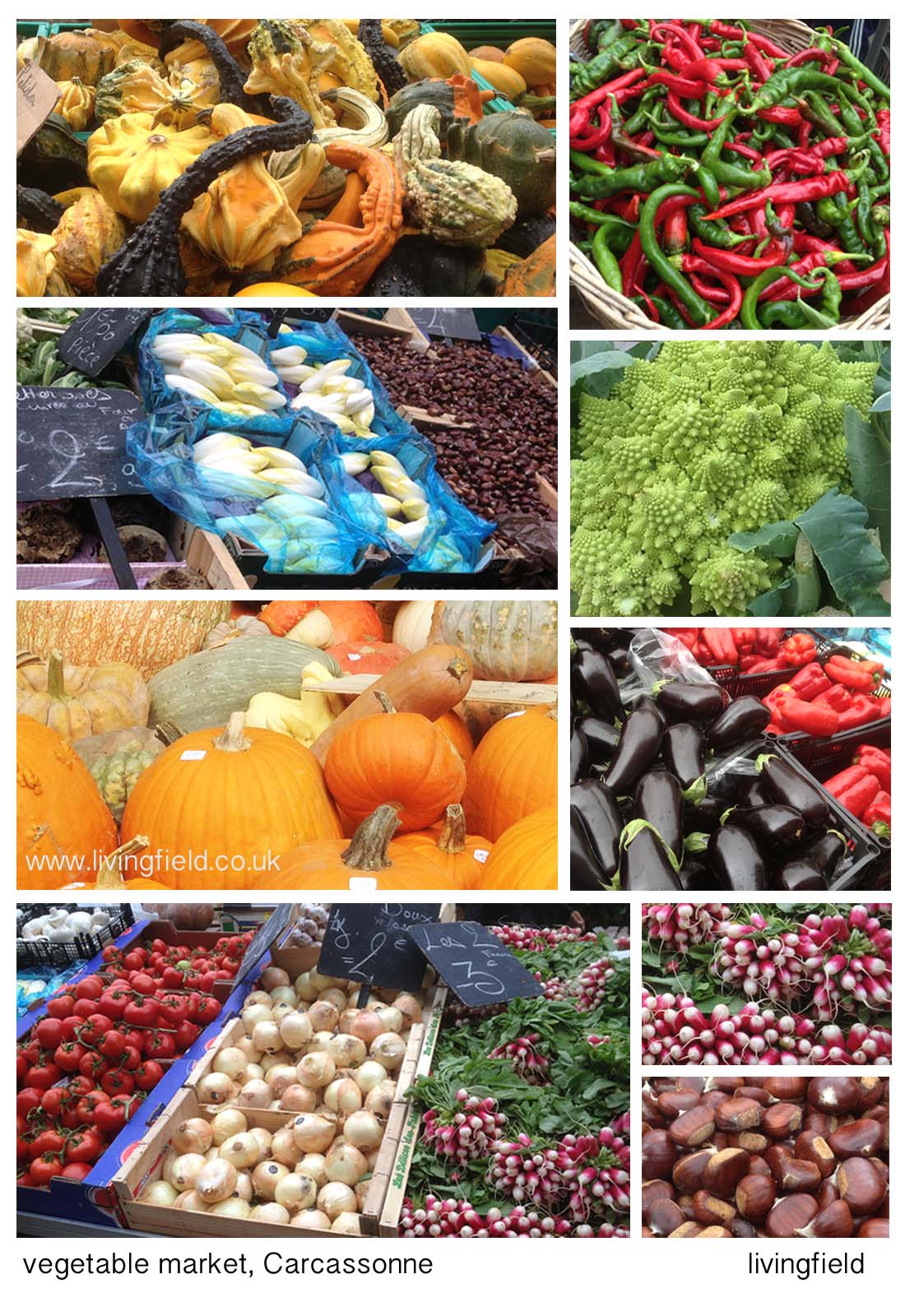And following Cornbread, peas and black molasses and Peanuts to pellagra …. another way to avoid pellagra and other debilitating deficiencies in the diet is to taste and enjoy the sheer variety of fresh vegetables on display and for sale at our best local food markets.
Here is one held at a square in the town of Carcassonne, in the south of France, a few minutes walk from the Citadel.
It was well attended by locals, discerning or knowing in their choices, and by a few visitors, envious of the variety and freshness.
Here were the very fresh and short-lived leaves that need to be eaten today or tomorrow, others with tougher outsides that will keep a few days and still others like the onions, chestnuts and chillies that will keep for weeks or for months if treated right.
And below is similar produce from markets near Yangon in Burma. There’re maize cobs at the top left, on the same stall as pumpkins (also as Carcassonne). And for sale nearby is a diversity of green matter that you rarely see in Europe.
All parts of the plant are eaten – seed (the germinated bean sprouts), leaf, whether fresh or part cooked or pickled, then roots, root and stem tubers, various reproductive parts (tomato and chillies) and things unidentified. Nuts and grain legumes were also on display.
There are similarities in the produce offered at these two markets thousands of miles apart. They both offer this wide range of ‘keeping’ time. There are no ‘sell by’ dates! But people still know how long things last before they go off.
In well nourished societies, fresh produce is balanced with storable grain that will sustain families over drought or frost. Of the grains, cereal (corn) grain gives energy whereas legume or pulse grain (peas and beans) gives more protein.
Yet the offering for sale of grain is where markets like those near Yangon and Carcassonne differ. Much less storable grain – cereal or legume – is on display in Europe than in south east Asia. Notably there is hardly any ‘short food chain’ grain for sale in local markets in Europe. Most of our grain is sourced globally and is highly processed.
In the north of the UK, for example, the most that the discerning home-buyer will see is a bag of locally grown oatmeal. And if in Orkney, you might strive to find a bag of bere meal (bere is a barley landrace). And who now sells storable, dried, peas and beans?
There will be more on the balance end tension between cereals, pulses and veg …..
Contact: geoff.squire@hutton.ac.uk

